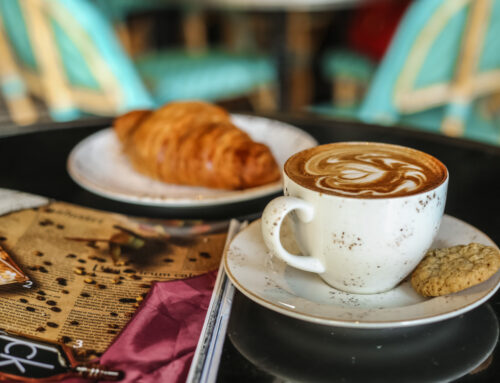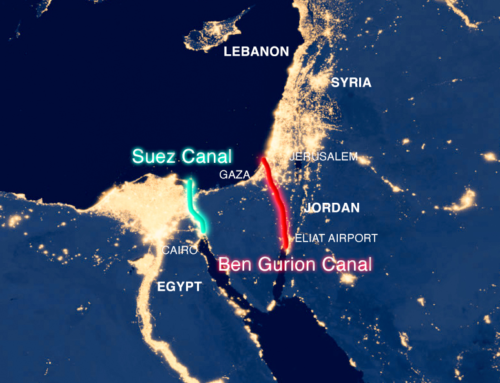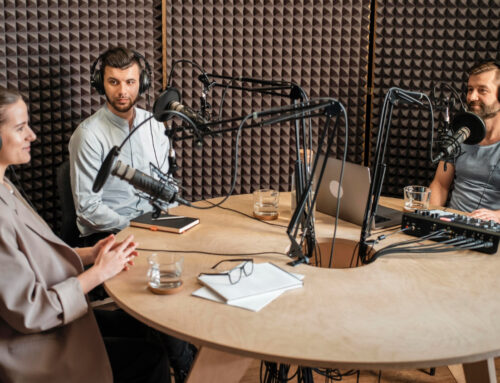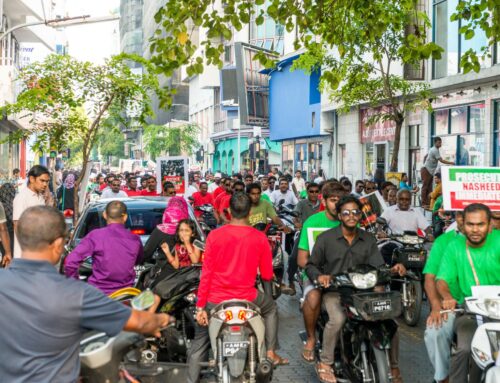Words by Jumana
It’s the 29th night of Sha’ban of the lunar Hijri calendar. Not a peep can be heard within homes where the orange speckles of coconut lamps have been lit. Set your eyes on the beach, however, and it is a whole different story. Despite how late it is, the island folk are gathered lounging on woven mats and soul-warming food drizzled unforgivingly in Maldivian sugar. Under a navy blue sky sparkling under the blanket of the milky way, children and adults alike try to spot the waxing crescent moon announcing the holy month of Ramadan. After all, it has been a few weeks of preparation that have led to this very moment.

These days, the ‘Maahefun’ season may bring a slew of drool-worthy food on newsfeeds and belly-bursting food every night if you’re lucky. Filled with the perfect balance of savory and sweet as well as contemporary and ‘traditional’. Maafuh (Sorghum flour and bananas with sugar) balls right next to the similar recipes for Aveli (flattened toasted rice) are only made better with Kulhi faaroshi (spicy bread rusks mixed with Rihaakuru).
Let us go back a few hundred years, and you will see that the pomp and circumstance of this event was far more exclusive. It was the time of Kings and Queens – and of course the King’s Royal guard (or Hangu Beykalun). According to historian (Hoarafushi) Mohamed Saleem, the feast on the eve of Ramadan was called “Bondimaskaashi” and included coconut, dried fish as well variations of cooked and thickened screwpine balls (Aaros) served only for the Sultan’s guard.

While you may find contemporary and popular bite-sized snacks such as neighbouring India’s Pani Puri or cubes of chocolate fudge at a ‘Maahefun’ table today, the menu was traditionally a bit different on the island of Laamu Fonadhoo. As Ahmed Rasheed wrote for Muniavas, the legendary construction of the ‘Maahefun Odi’ – a temporary makeshift boat was built on the lagoon where teenagers spend a month hunting the perfect logs of wood from Unigas (Beach Gardenia) Dhigga (Sea Hibiscus) trees. This process was a community effort in perfecting the art of architecture and design
These ‘floating’ wonders of the ‘Maahefun Odi’ are stacked and roofed with woven green palm leaves where the ever-patient and intricate construction crew bartered tender coconuts for sweet treats and such on the eve of Ramadan. It is on this day that families gather in the shallow azure lagoons for a day of sun and swimming. The ladies don’t slack either, for they have been busy cleaning kitchens and homes as well as preparing snacks inside metal Dabiya for at least a month ahead. Dhiyaa hakuru or coconut sap cooked with white Akiri or coral are drizzled over rice puffs and crisps made with Hih’thala Fuh or Arrowroot powder for delicious snacking.

If you sneak a peek inside thatched and coral stone homes on the big day itself, you may notice that the inhabitants are busy preparing Ona-folhi and Ruh budu. Ona Folhi (directly translatedinto ‘stem crepes’) are inspired by the stems of evergreen papaya trees and are made with rice flour batter shaped with the stems and deep fried. Ruh Budu is one of those creations unique to island life- for it is inspired by a material revealed only when the coconut palms have been chopped down. The old version of an icing bag and nozzle, the rice flour batter is thickened and poured into a coconut shell with a small hole. The paste is then pushed through the hole and into hot oil to prepare this ball of thin, worm-like curves.
From the southernmost Addu to northernmost Kelaa, most islands have their version of an Eid bondi whipped up in the early hours of the last day of Ramadan. Similar to these unique features of islands, the manner in which ‘Maahefun’ is celebrated in northern Kulhudhuffushi is also mesmerizing

Have you ever washed your hair with wood ash?
After a month of thoroughly cleaning their homes and wood-burning ovens as well as painstakingly spreading white sand from the beach onto the main courtyards, every preparation necessary for a smooth Ramadan is ensured. Armed with sour and spicy snacks with the likes of papaya and Rihaakuru, droves of families used to make their way to the beaches on the day before Ramadan for a special hair wash. Even today, the alkaline combination of wood ash with water claims to leave hair ‘soft and silky’. A similar event to south’s Laamu Fonadhoo then takes place where families spend the day soaking in the blue lagoons amid good food and even better company. Come sunset, the same groups that gathered in the sea now come together to indulge in Boafolhi (a type of thick pancake made with young coconut and flour) wrapped in banana leaves. Little coconut shells are filled with oil and lit up to be placed lovingly around homes as locals turn their gaze up at the sky to seek the crescent moon.









Leave A Comment